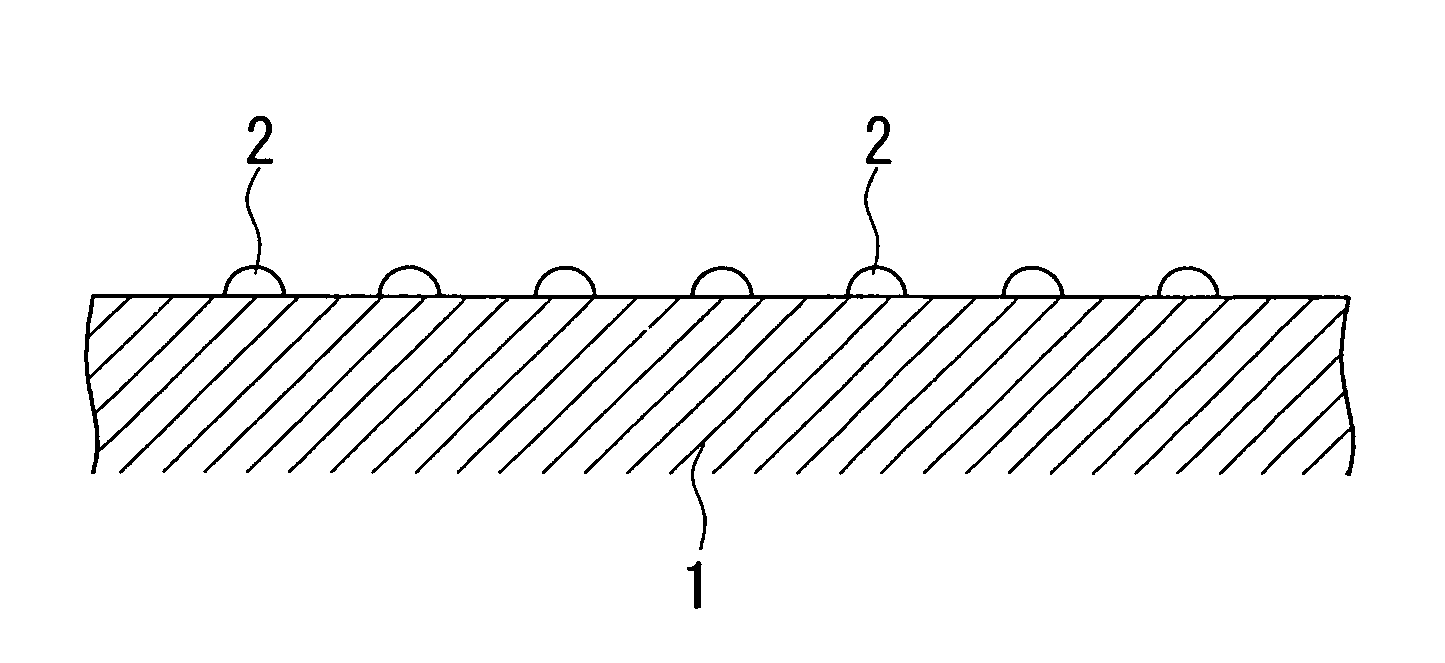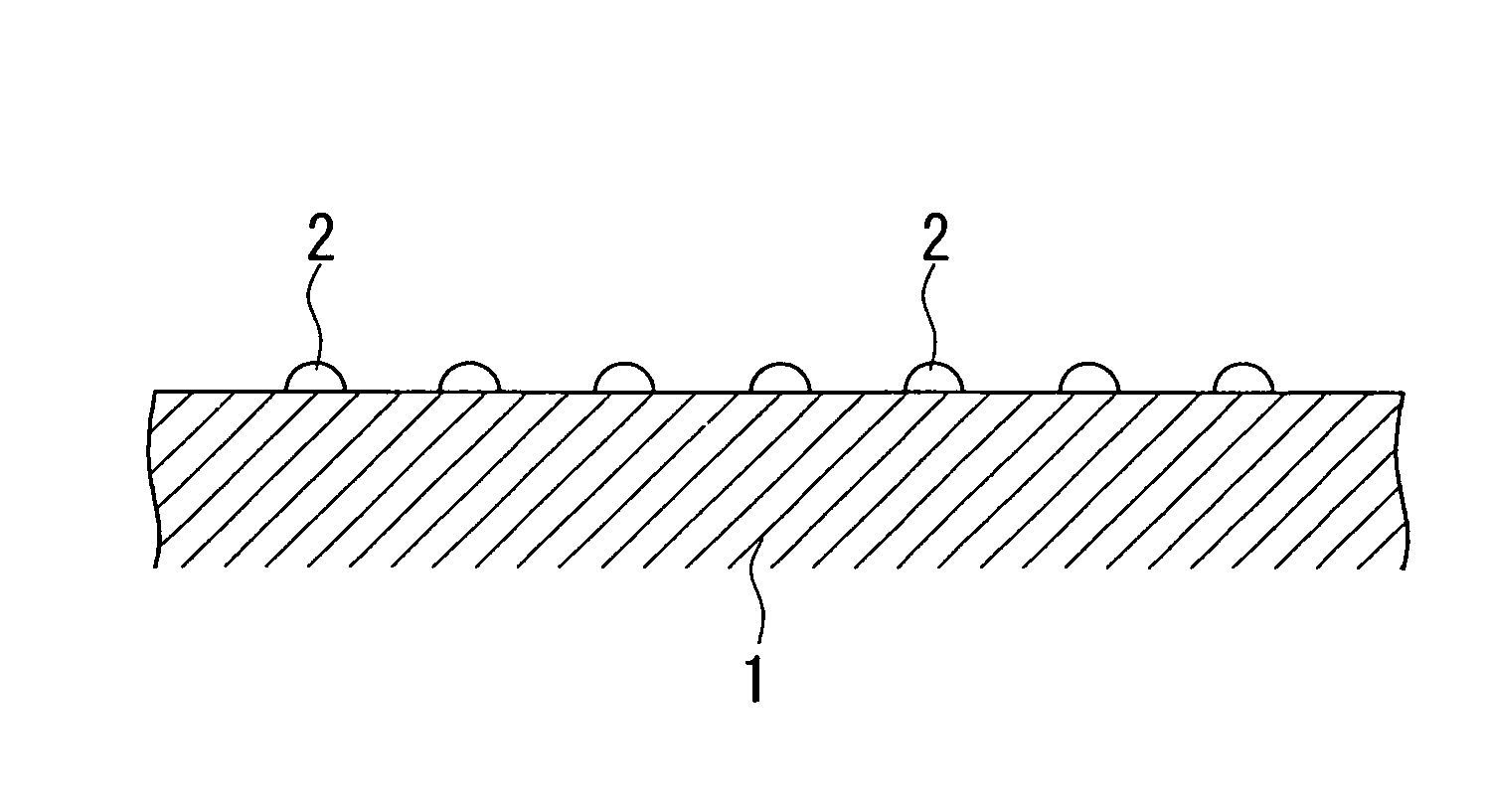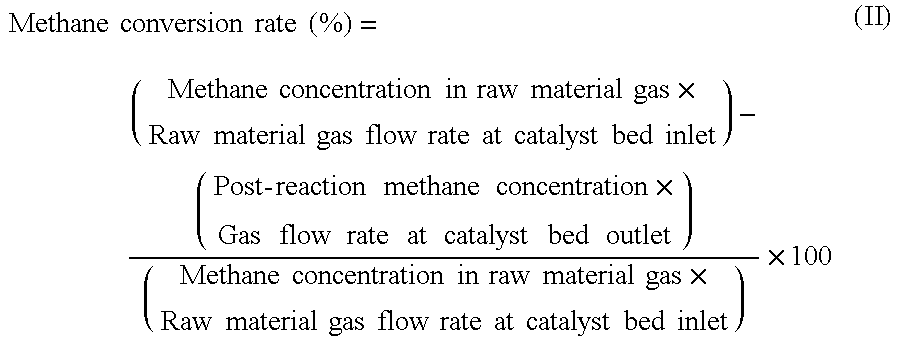Composite oxide for hydrocarbon reforming catalyst, process for producing the same, and process for producing syngas using the same
a technology of hydrocarbon reforming catalyst and composite oxide, which is applied in the direction of catalyst activation/preparation, metal/metal-oxide/metal-hydroxide catalyst, and chemical production. it can solve the problems of reducing catalytic activity, unable to maintain the dispersibility of active components, and unable to avoid massive carbonaceous particle deposition
- Summary
- Abstract
- Description
- Claims
- Application Information
AI Technical Summary
Benefits of technology
Problems solved by technology
Method used
Image
Examples
example 1
[0101]A magnesia powder containing 0.1% by mass of calcium was molded into a cylindrical shape having an external diameter of 3 mm and a height of 3 mm, and was calcined at 1100° C. to obtain a carrier (carrier molding treatment). For the aqueous solution for impregnation, 238.39 g of Co(NO3)2.6H2O as a catalytic active component, 36.91 g of Cr(NO3)2.9H2O as an oxidation resistance enhancing component, and 420.06 g of Mg(NO3)2.6H2O as a dispersion enhancing component were dissolved in water, to prepare one liter of a mixed solution (preparation process). The carrier was immersed for 30 minutes in the mixed solution for impregnation which had been maintained at ambient temperature (impregnation treatment), and the composite oxide precursor pulled up from the aqueous solution was dried in atmospheric air at 120° C. for 12 hours (drying process), and then calcined in atmospheric air at 500° C. for 3 hours (provisional calcination process). The impregnation treatment, the drying process...
example 2
[0104]A composite oxide B was obtained in the same manner as in Example 1, except that the amount of Co(NO3)2.6H2O in Example 1 was changed to 238.03 g, 36.91 g of Cr(NO3)2.9H2O was changed to 27.54 g of Ga(NO3)2.nH2O, and the amount of Mg(NO3)2.6H2O was changed to 419.43 g. The resulting composite oxide B was subjected to Reaction Examples 1 to 3 that will be described later. The results of the Reaction Examples 1 to 3 are presented in Table 1.
example 3
[0105]A composite oxide C was obtained in the same manner as in Example 1, except that the amount of Co(NO3)2.6H2O in Example 1 was changed to 237.38 g, 36.91 g of Cr(NO3)2.9H2O was changed to 6.83 g of (NH4)10W12O415H2O, and the amount of Mg(NO3)2.6H2O was changed to 418.28 g. The resulting composite oxide C was subjected to Reaction Examples 1 to 3 that will be described later. The results of the Reaction Examples 1 to 3 are presented in Table 1.
PUM
| Property | Measurement | Unit |
|---|---|---|
| molar ratio | aaaaa | aaaaa |
| temperature | aaaaa | aaaaa |
| temperature | aaaaa | aaaaa |
Abstract
Description
Claims
Application Information
 Login to View More
Login to View More - R&D
- Intellectual Property
- Life Sciences
- Materials
- Tech Scout
- Unparalleled Data Quality
- Higher Quality Content
- 60% Fewer Hallucinations
Browse by: Latest US Patents, China's latest patents, Technical Efficacy Thesaurus, Application Domain, Technology Topic, Popular Technical Reports.
© 2025 PatSnap. All rights reserved.Legal|Privacy policy|Modern Slavery Act Transparency Statement|Sitemap|About US| Contact US: help@patsnap.com



